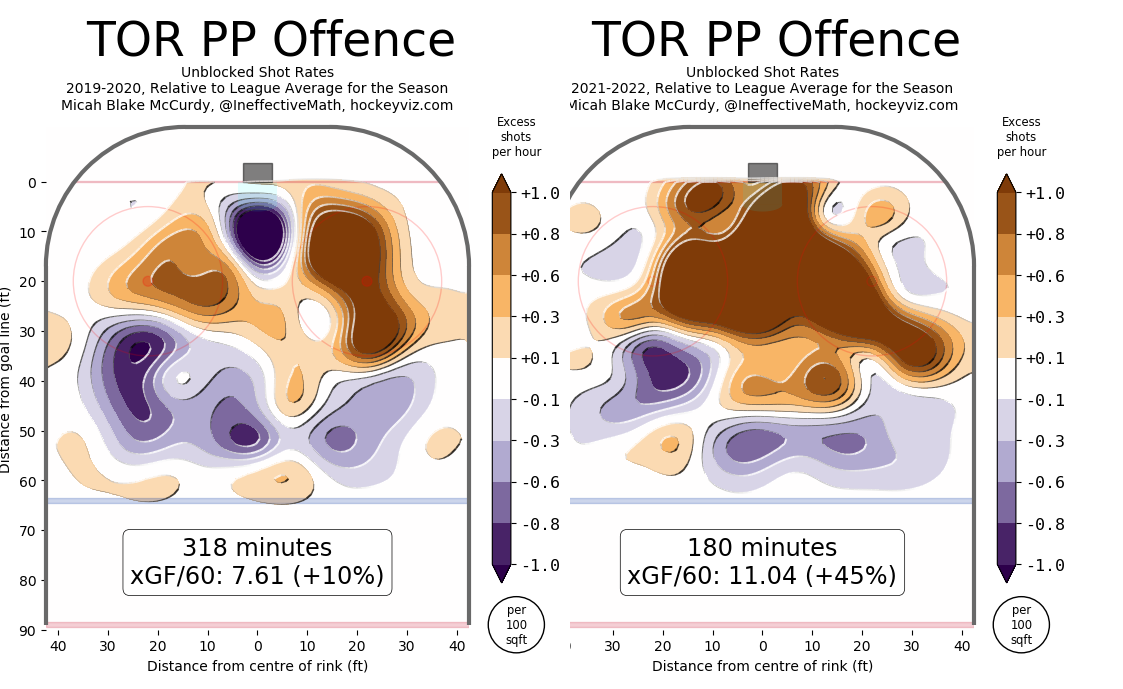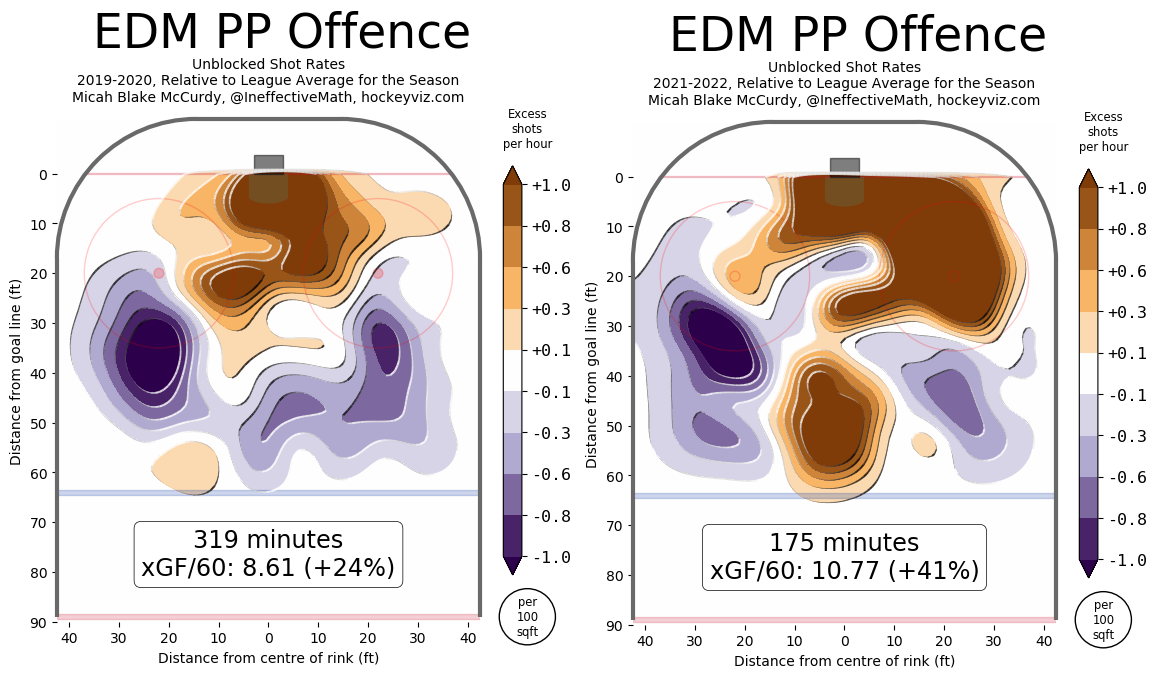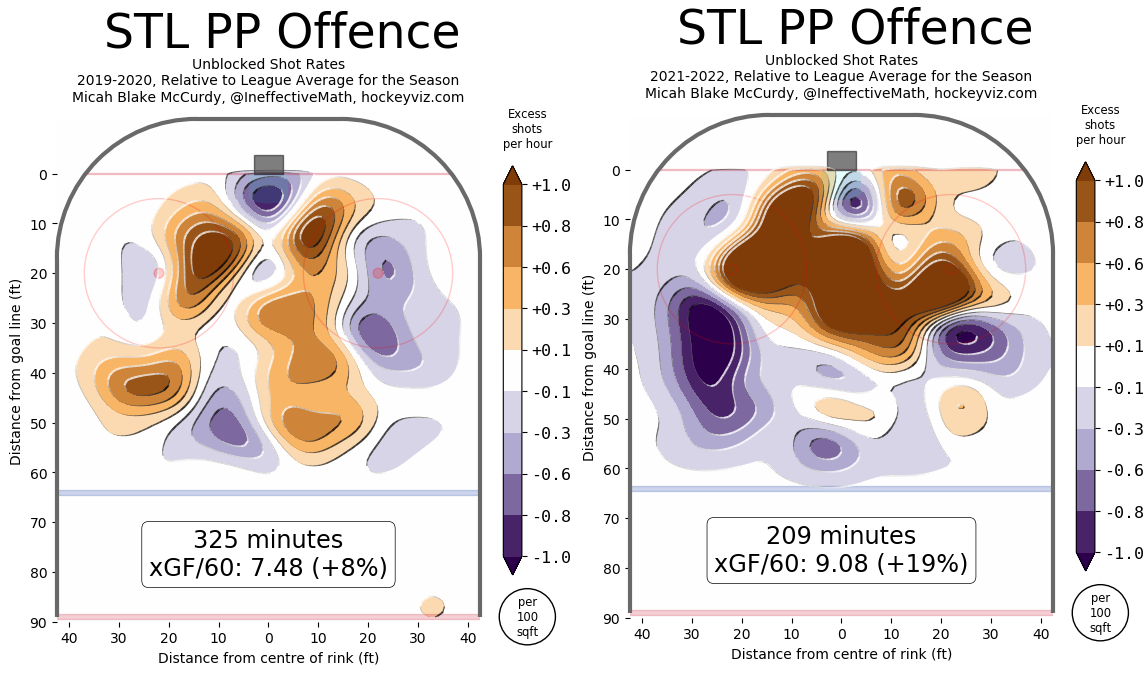Feb 7, 2022
NHL’s top power plays driving scoring to new heights
The Toronto Maple Leafs are a bona fide Stanley Cup contender. The St. Louis Blues are positioning themselves for another postseason bid. The Edmonton Oilers are fighting for their playoff lives. One thing ties these three clubs together: they all have blistering power-play units.
By Travis Yost

The Toronto Maple Leafs are a bona fide Stanley Cup contender. The St. Louis Blues have played to a 112-point pace since Dec. 1, positioning themselves for another postseason bid. The Edmonton Oilers are fighting for their playoff lives.
Three teams, three very different circumstances. But one thing ties these three clubs together: they all have blistering power-play units.
The National Hockey League has seen a bit of a scoring revolution this season when it comes to the power play, but it’s not the result of additional opportunities. Teams are seeing about 2.9 power-play opportunities per game, which is down from the 10-year average (3.1).
At first, I suspected early-season volatility was at play – a combination of serious shooting luck and goaltending weakness conspiring to create a surge in scoring that would invariably abate over time. After all, we have seen that in any number of regular seasons prior.
But that regression back towards league averages hasn’t happened this time around. It’s a fascinating shift, and one that’s not being driven by the breadth of the NHL. Instead, the league’s most potent power plays have remained a cut above the rest, and that’s driven league-wide scoring on the man advantage to higher levels.
Let’s first look at the league averages to frame this appropriately. This shows the statistical modern era (2007-22). On both a rate goal scoring and expected rate goal scoring basis, we are looking at a 15-year high.

One thing this serves to illustrate is that this change didn’t happen overnight. As more scoring talent has been injected into the league, and as teams have modified their strategy and tactics to be more offensively accommodating, scoring has increased.
What else do we observe? Prominently, two things. The first is that shooting percentage hasn’t notably changed over this 15-year interval (or even over a shorter five-year horizon), which means teams are still converting on roughly the same number of chances.
We also know, though I won’t get into too much detail here, that shot volumes are not a driver. Teams are averaging about 97 shot attempts per 60 minutes of play this year; that’s in line with the past five seasons, and notably down from the last scoring peak (2017-18 season; 103 attempts per 60 minutes of play).
Without materially changing conversion rates (teams trading fewer shots for more premium scoring chances) or shot volumes (teams trading shot quality for flurries of lower probability scoring chances), only one thing is left. The likelihood of each shot going in has increased, or said another way, teams are finding an easier time generating shots from the interior and moving goaltenders out of position.
If we look at the number of shot attempts needed to create one expected goal (which, I remind you, is moving in parallel with real goal scoring), you can see how this has plummeted this season:

We can reasonably infer here that the league’s offences are winning the battle on the power play, because they are creating additional offence without volatility (shooting percentage) or volume (quantity of chances, or total power plays per game) to do it.
We also know this is not a league-wide trend. If we segment performance, we can see that the NHL’s power-play powerhouses are doing the heavy lifting:

There are two notable conclusions here. First and most obvious, we are again seeing a multi-year trend, where the NHL’s most prolific power-play offences continue to improve on prior performance. The other side of the coin is that the league is seeing serious divergence in performance. If we look at these three segments:
- Teams near 25th percentile performance have seen a 2 per cent drop in rate scoring
- Teams near median performance have seen a 5 per cent increase in rate scoring
- Teams near 75th percentile performance have seen a staggering 23 per cent increase in rate scoring
When you drill into those teams – I come back to the aforementioned Maple Leafs, Oilers, and Blues – you see truly dramatic shifts in the way they are attacking the opposition. I’d note that all three teams have had limited changes in core personnel, too, which drives home intrigue about further strategic and tactical shifts.
Here’s Toronto’s shot profile from two seasons ago compared to this year (via HockeyViz):

Here’s Edmonton, another team with plenty of star power at the top of the lineup:

Here’s St. Louis, a team that doesn’t have the same calibre of playmaking from the forward group, but a team that certainly runs deep in terms of scoring firepower:

If you think all three of these heat maps (and the evolution of these teams over the past three seasons) look similar, it’s because they are.
It goes back to the original point: a handful of teams around the league, through the personnel they have and the offensive strategies they have implemented, have quietly changed the game when it concerns the power play. It’s never been easier to generate shots from the circles, and it’s never been easier to funnel pucks and traffic to the front of the goaltender.
This is still a sport decided on the merit of even-strength play. But a great power play can be quite a difference maker, and right now, these clubs have found a way to more scoring and more wins.
The rest of the league is left chasing accordingly.
Data via NaturalStatTrick, Evolving Hockey, Hockey Reference, NHL.com

